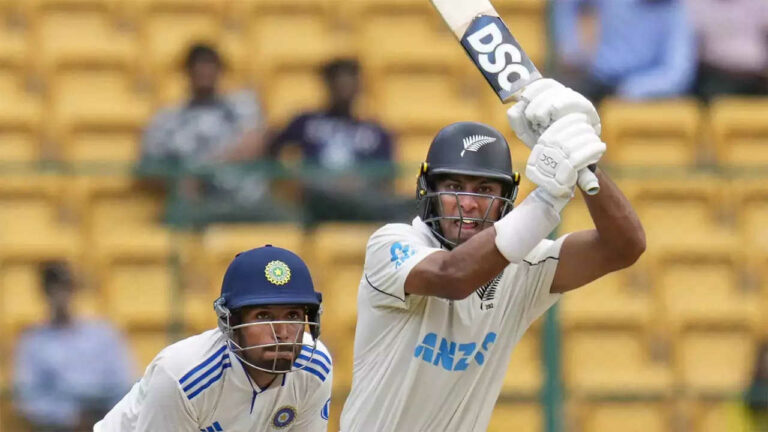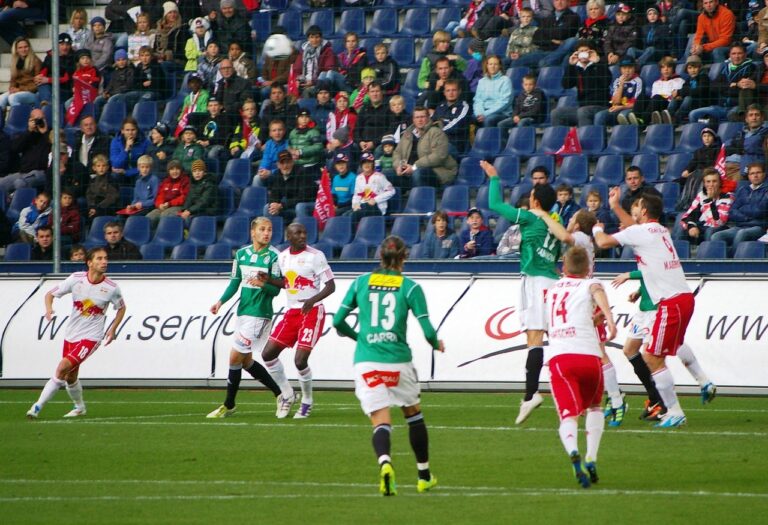How Cricket Teams Manage Player Contracts
11xPlay, Allpaanel: Player contract negotiations are a crucial aspect of building a successful cricket team. These discussions involve representatives from both parties, including the player’s agent and the team management, working together to reach mutually beneficial agreements. Negotiations often focus on salary, contract length, performance incentives, and other key terms that impact the player’s role within the team.
During contract negotiations, both the player and the team must consider various factors to ensure a fair and satisfactory agreement. Players may push for higher salaries or performance-based incentives based on their past achievements and skill level, while teams aim to manage their budget effectively and maintain a competitive roster. Finding common ground and open communication are essential in reaching agreements that benefit both parties involved in the negotiation process.
Player Contract Length and Renewals
Player contract length and renewals are crucial aspects in the world of cricket, dictating the duration of a player’s commitment to a team and setting the stage for potential future negotiations. The length of a player’s contract often reflects the team’s confidence in their performance and potential contribution, with longer contracts indicating a higher level of trust and investment in the player. Renewals provide an opportunity for both parties to reassess and potentially adjust contract terms based on the player’s performance, market value, and the team’s financial considerations.
Teams must carefully consider the balance between offering competitive contract lengths to retain key players and ensuring flexibility to make necessary changes to the roster as needed. Strategic planning around contract renewals is essential in maintaining a competitive team while managing financial constraints. It is common practice for teams to start contract renewal discussions well in advance to allow ample time for negotiations and avoid any last-minute disputes or rushed decisions that could impact team dynamics and performance.
Performance-Based Incentives in Player Contracts
Performance-based incentives in player contracts are becoming increasingly common in the world of cricket. These incentives are structured to motivate players to perform at their best by linking a portion of their compensation directly to their on-field achievements. For instance, players may earn bonuses for scoring a certain number of runs, taking wickets, or achieving other performance metrics set by the team management or cricket board.
These incentives not only provide players with additional financial rewards for exceptional performance but also serve as a means of accountability and fair compensation. By aligning financial incentives with on-field success, teams can encourage players to continuously strive for improvement and contribute to the overall success of the team. Additionally, performance-based incentives can help in creating a competitive environment within the team, pushing players to push their limits and excel in their respective roles.
Managing Player Salaries and Budgets
One of the primary challenges faced by cricket team management is the effective management of player salaries and budgets. With the wide disparity in earning potential among professional cricketers, striking a balance between rewarding top performers and maintaining financial sustainability can be a delicate task.
Careful budget allocation is essential to ensure that the team can retain key players while also investing in emerging talent and strategic acquisitions. By implementing transparent salary structures that align with player performance, teams can incentivize excellence on the field without overspending on underperforming players.
Balancing Team Composition with Player Contracts
When managing a cricket team, one of the key factors to consider is how player contracts impact the overall team composition. It is crucial to strike a balance between investing in star players and ensuring depth in all positions to create a well-rounded team.
Team composition plays a significant role in the success of a cricket team, and this can be influenced by the contracts offered to players. By carefully evaluating the skills and strengths of each player alongside their contract terms, teams can create a cohesive unit that maximizes performance on the field while also managing financial resources effectively.
Player Contract Buyouts and Transfers
When a player’s performance declines or a team’s needs change, player contract buyouts and transfers become necessary mechanisms to address such situations. Buyouts allow teams to terminate a player’s contract before its completion, typically for a negotiated amount. This enables both the player and the team to part ways amicably, allowing the player to seek opportunities elsewhere and the team to reallocate resources effectively.
On the other hand, player transfers involve the movement of a player from one team to another through a formal agreement. Transfers often occur when a player is no longer fitting into a team’s strategy or when mutual agreement is reached between the player and the team. By engaging in player transfers, teams can enhance their roster with new talent while providing the transferring player with the chance for a fresh start in a different environment.
Legal Aspects of Cricket Player Contracts
Legal aspects play a crucial role in cricket player contracts, as they establish the framework within which the agreements are formed and executed. These legal considerations encompass various elements such as contract terms, rights, obligations, and dispute resolution mechanisms. It is essential for both parties involved, the player and the team management, to adhere to the legal requirements stipulated in the contracts to ensure a smooth and enforceable agreement.
Furthermore, legal aspects also touch upon aspects like privacy rights, image rights, and intellectual property considerations in cricket player contracts. These clauses outline the rights of players in using their likeness for promotional activities, endorsements, and other commercial endeavors. Additionally, they protect the intellectual property of the teams and sponsors, establishing guidelines for the use of logos, trademarks, and other proprietary assets associated with the cricket entities involved.
Negotiating Sponsorship Deals for Players
Cricket players have become iconic figures, not only for their on-field prowess but also for their off-field appeal. Negotiating sponsorship deals for players has become a crucial aspect of their career progression and financial success. These deals are typically tailored to individual player personas, performance levels, and marketability to ensure a win-win situation for both the player and the sponsoring brand.
When negotiating sponsorship deals for players, key factors that come into play include the player’s visibility, reputation, and fan following. Sponsors are keen on associating with players who not only excel in their sport but also embody values that resonate with their brand image. As such, players with a strong social media presence, consistent performance track record, and a positive public image are often in high demand by potential sponsors looking to leverage their influence for mutual benefit.
Ensuring Player Welfare and Well-being in Contracts
Cricket player contracts play a crucial role in safeguarding the welfare and well-being of the athletes. Ensuring that contract terms encompass provisions for adequate rest periods, medical support, and access to mental health resources is essential in promoting the overall health of players. Additionally, contracts should include clauses that prioritize player safety during training sessions, matches, and while traveling for games to mitigate the risk of injuries and fatigue.
Moreover, monitoring workloads and providing players with sufficient time off is pivotal in maintaining their physical and mental fitness throughout the season. It is imperative for teams to cultivate a culture that values the health and well-being of their athletes to enhance performance and longevity in a demanding sport like cricket. By incorporating comprehensive welfare measures into player contracts, organizations demonstrate their commitment to supporting the holistic development and sustainability of their players’ careers.
Player Contract Disputes and Resolutions
Player contract disputes can arise due to various reasons, such as disagreements over salary, playing time, or performance expectations. These disputes can often lead to strained relationships between players, management, and team owners, impacting team dynamics and on-field performance. It is crucial for all parties involved to approach contract disputes with a level-headed and professional mindset to find amicable resolutions that benefit both the player and the team.
Resolving contract disputes in a timely and fair manner is essential to maintain the integrity and professionalism of the team. Communication plays a vital role in addressing any concerns or grievances that players may have regarding their contracts. By creating an open dialogue and actively listening to the players’ perspectives, management can work towards finding mutually beneficial solutions that uphold the players’ rights while also safeguarding the team’s interests. Ultimately, successful resolution of contract disputes can contribute to a harmonious team environment and foster trust and respect among all stakeholders involved.
How long are cricket player contracts typically negotiated for?
Cricket player contracts can vary in length, but they are usually negotiated for a fixed period of time, such as one season or multiple years.
Are player contracts in cricket often renewed after they expire?
Yes, player contracts in cricket are often renewed after they expire, depending on the player’s performance, availability, and the team’s budget.
Do cricket player contracts include performance-based incentives?
Yes, many cricket player contracts include performance-based incentives such as bonuses for achieving specific milestones or goals.
How are player salaries managed within a team’s budget?
Player salaries are managed within a team’s budget by carefully balancing the cost of player contracts with other expenses and revenue streams.
Can cricket player contracts be bought out or transferred to another team?
Yes, cricket player contracts can be bought out or transferred to another team, but this process usually involves negotiations and potentially financial compensation.
What legal aspects should be considered in cricket player contracts?
Legal aspects to consider in cricket player contracts include contract terms, dispute resolution mechanisms, and compliance with relevant laws and regulations.
How are sponsorship deals negotiated for cricket players?
Sponsorship deals for cricket players are typically negotiated by their agents or managers, taking into account the player’s market value, brand image, and marketing opportunities.
How can player welfare and well-being be ensured in player contracts?
Player welfare and well-being can be ensured in player contracts by including provisions for healthcare, insurance, rest periods, and other support services.
How are player contract disputes typically resolved?
Player contract disputes in cricket are usually resolved through negotiations, mediation, or arbitration, with the goal of finding a mutually satisfactory solution for both parties.







